By Dan Weisz
Between a trip to see grandkids and a computer crashing and other things, I’ve been “gone” for while but now I’m back. Prior to my disappearance, I visited the Santa Cruz Flats agricultural area. This flat desert land extends about 60 miles to the northwest of Tucson. Because of the farming, there are extensive cultivated fields and water available for the birdlife. Every year, many raptors fly south to this area to winter.
One of the special birds that migrates through the area, but doesn’t settle here, is the Swainson’s Hawk. During Breeding season, Swainson’s Hawks are birds of the open plains of the western United States. During the fall, they migrate through our area on their way to their wintering home in the plains of Argentina. And they migrate in large flocks, very large flocks. Although the plumage of Swainson’s Hawks is variable, they will often sport the unmistakable “bib” that the bird below is wearing. This bird was photographed in early light, giving it that glow.
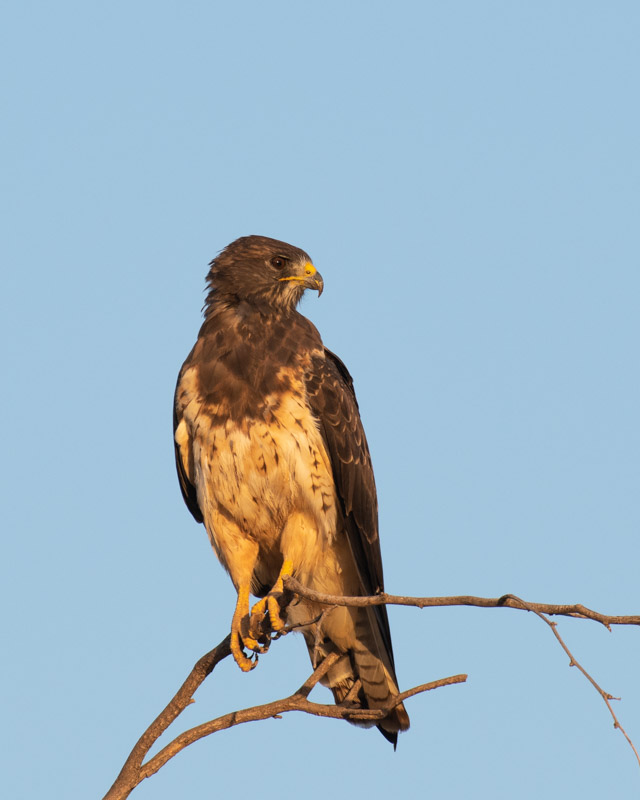
This Swainson’s Hawk does not display a bib and is colored very dark. This coloration is called a “rufous morph”. Birdnote has a nice piece on Swainson’s: https://www.birdnote.org/listen/shows/swainsons-hawks-migrate-south
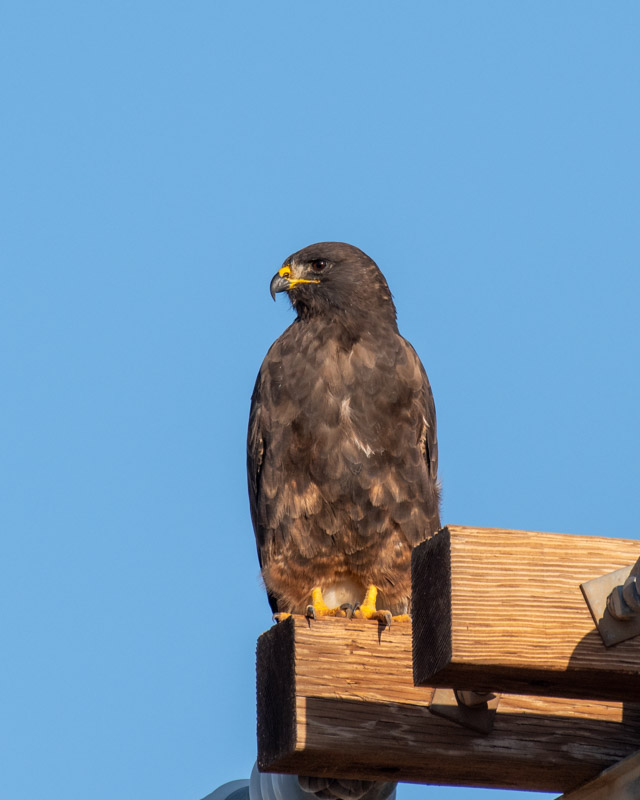
And here is another Swainson’s, with much lighter plumage. This is a juvenile. This photo was taken on a very hot morning and, because it is late in the morning, this bird was very hot. It was breathing through its mouth in order to “dump” some heat.
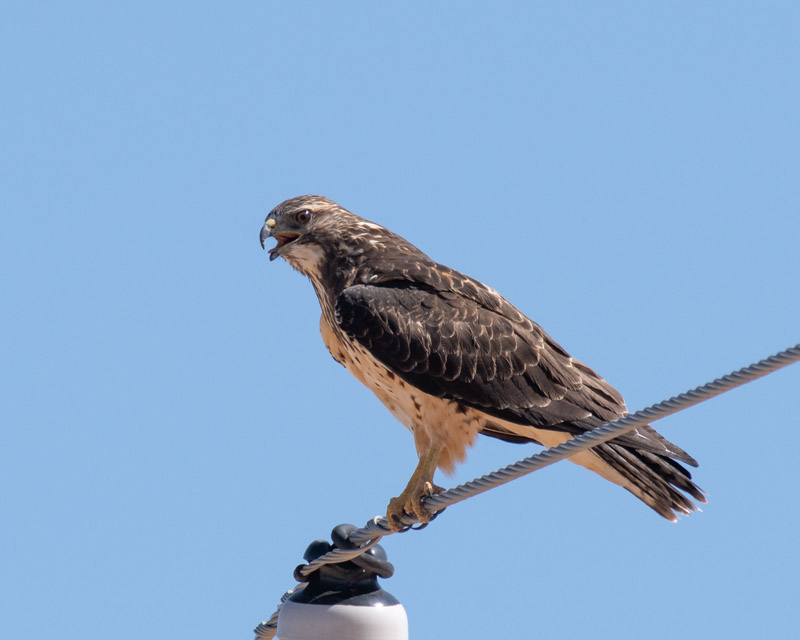
During breeding season Swainson’s Hawks eat mostly the three “R’s”: rodents, rabbits and reptiles. During non breeding season (right now) they are insect feeders with grasshoppers being on top of the menu. The wide open agricultural fields of Santa Cruz Flats are ripe with grasshoppers and you can find Swainson’s Hawks working along the ground in search for food. Here is another rufous morph Swainson’s!
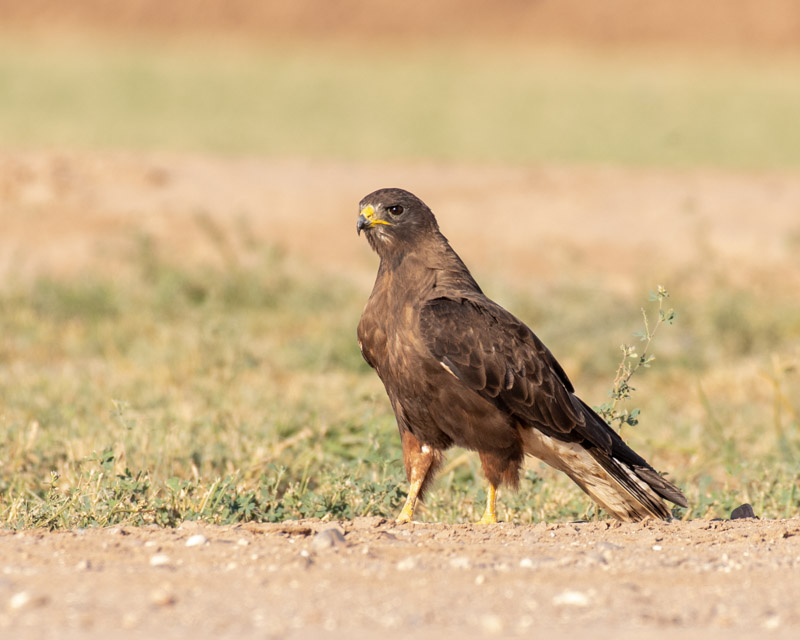
Although there are Prairie Falcons in southern Arizona year-round, there are more here in the winter. Still, they are an uncommon bird to see. In the winter, they can be found near fields and desert scrub flats. They usually are wary of people but this bird sat on the telephone pole even when I got out of my car. That made me think this was a younger bird- more curious than cautious.
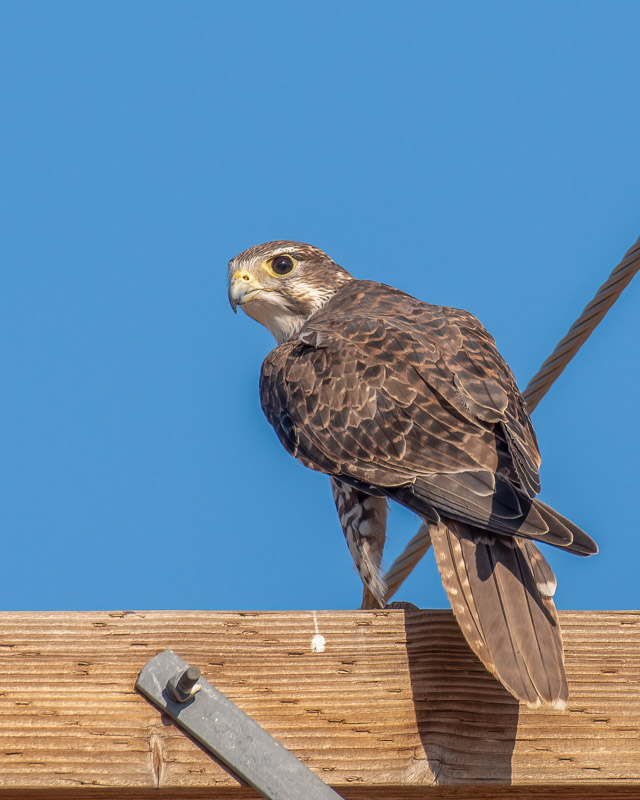
Walking around to the other side of this Prairie Falcon confirmed that is was a juvenile or immature bird. That bold streaking on its belly is a sign of its youth. An older Prairie Falcon would have more white and less spotting on its belly.
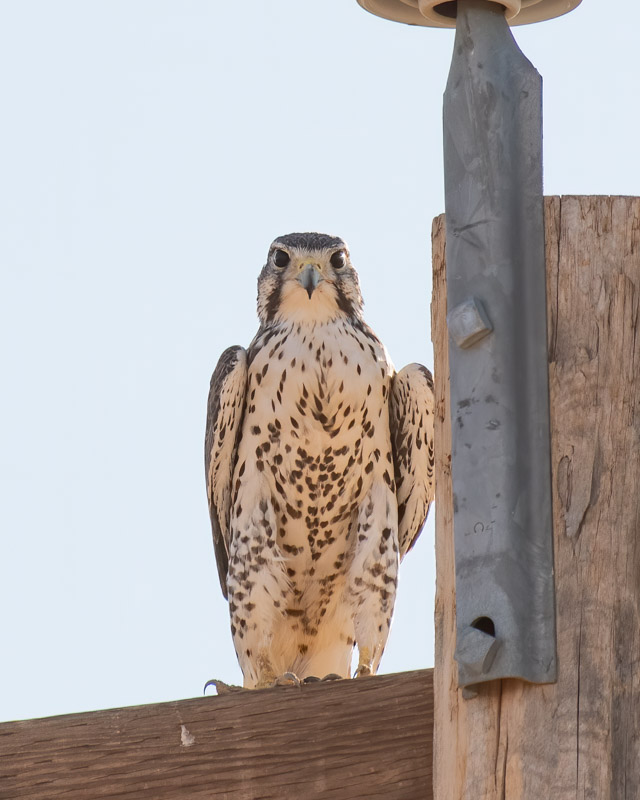
Another immature raptor was this young Cooper’s Hawk. Cooper’s Hawks are very common in the Tucson area. If you have a bird feeder in your yard, then you’ve seen Cooper’s Hawks swooping in to try to catch a bird for a meal. Cooper’s Hawks are almost exclusively bird hunters. Birdnote shares a bit about this: https://www.birdnote.org/listen/shows/urban-coopers-hawks
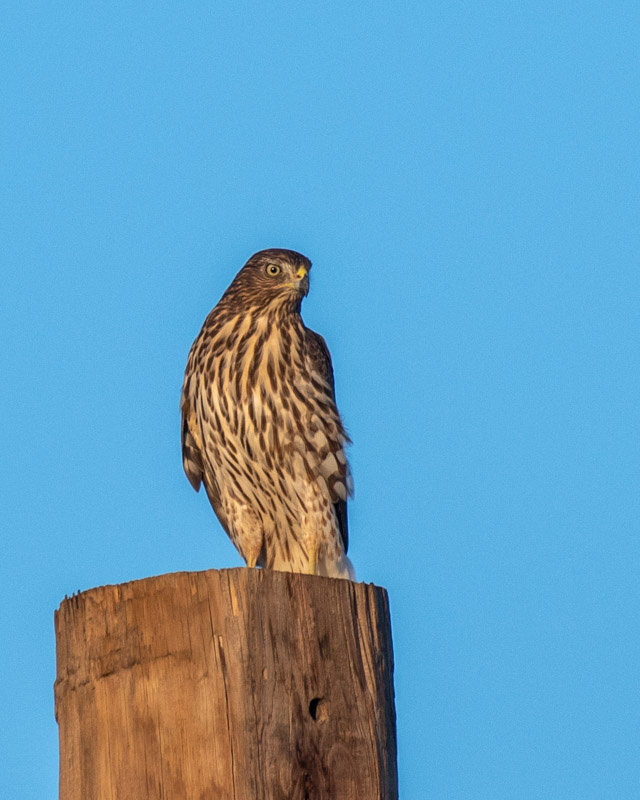
Here was the biggest surprise of the trip. This is a juvenile Gray Hawk. Gray Hawks are supposed to reside in riparian areas in southern Arizona, in or near stream beds or canyons with tall trees. The huge area of desert flats is not typical Gray Hawk territory. Whether this bird was a wanderer, or got lost while traveling is a mystery. It was hanging around a farm house with many tall trees around it and the Gray Hawk was seen there for a number of days.
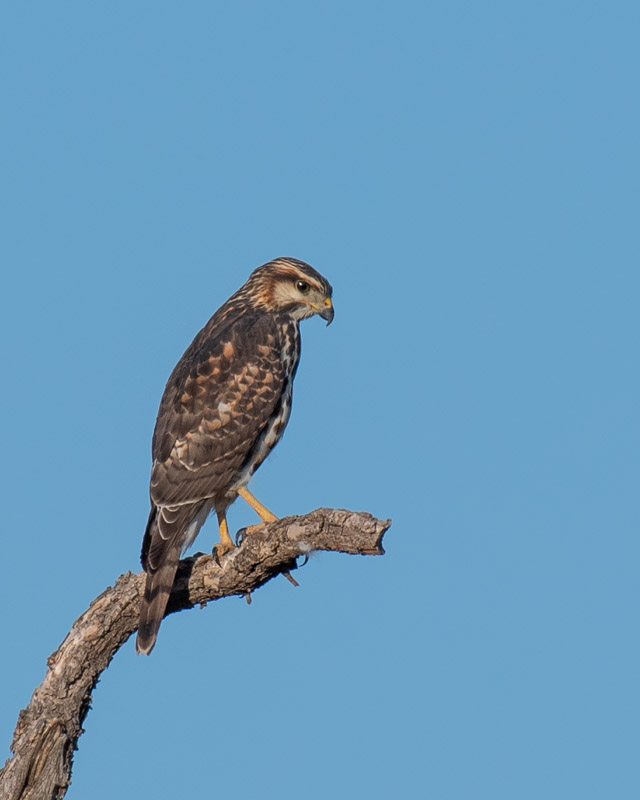
Turkey Vultures are another bird that lives in southern Arizona year-round but is joined by others who fly down for the winter. These are very large birds. I love the bare skin on its head. Turkey Vultures are interesting creatures and beneficial to us for cleaning up carrion. To find out why their pink legs look white in this photo and to read more about them, go to https://www.desertmuseum.org/vultures/morefacts.php
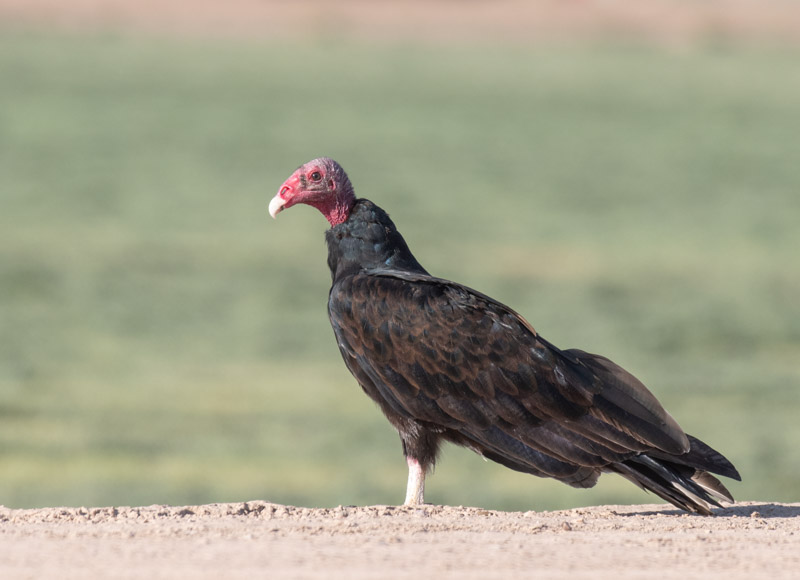
American Kestrels are one of six falcons in the United States (along with the Prairie Falcon above). They are very handsome birds with the male sporting those glue/gray wings and head. They are another raptor who is present in southern Arizona year round but whose local numbers swell with winter visitors. Here is a short video of a Desert Museum docent talking about these birds (the first ten seconds are choppy but the video runs smoothly afterwards): https://southernarizonaguide.com/arizona-sonora-desert-museum-part-1/
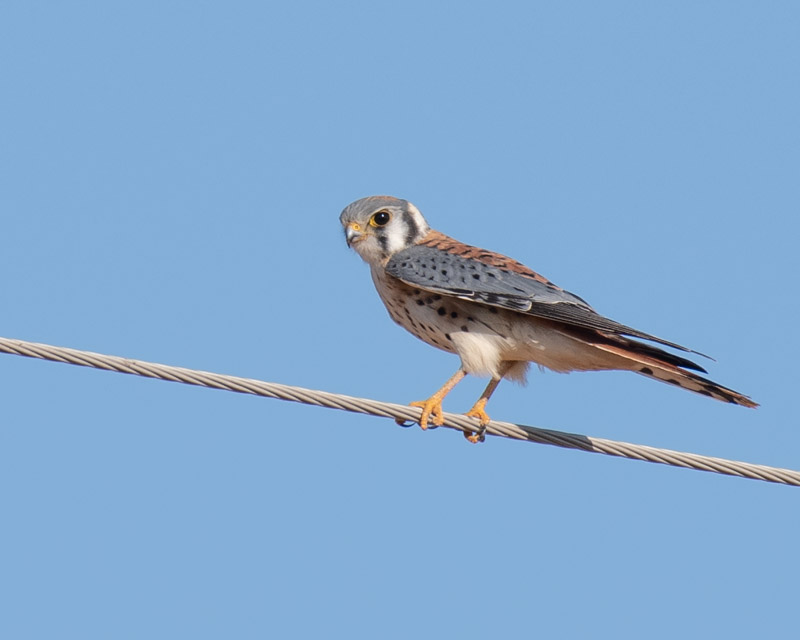
Finally, perhaps my favorite photo of the group. This is a very large Red-tailed Hawk, one of a pair I saw sitting side by side on a telephone pole. The smaller one, the male, flew off leaving this female alone on the pole. Females of this species are much larger than the males. Red-tail Hawks are the most commonly seen hawks in the United States and, yes, we have these year-round in the Tucson area and, yes, their numbers swell with winter visitors here. This bird was looking back at where her partner had flown and she has engaged her nictitating membrane, or third eyelid. This translucent membrane protects her eye from dust and keeps her eye moist. It is also a very cool look for a strong raptor.
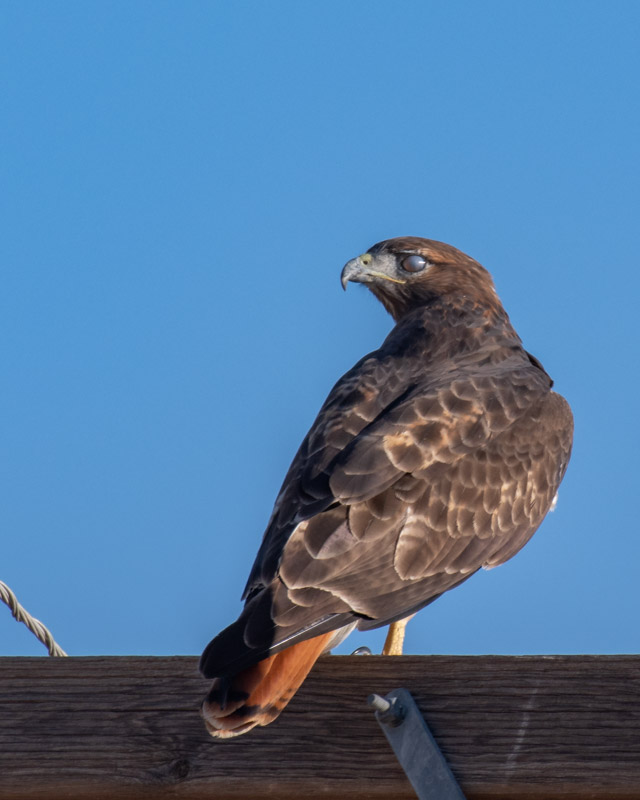
This Birdnote broadcast begins with the unmistakeable call of a Red-tailed Hawk. This is the call Hollywood uses for pretty much every raptor on every show ever broadcast:
https://www.birdnote.org/listen/shows/red-tailed-hawk-bulky-bird
I may be posting a number of blogs entries soon, catching up from my absence with photos I took during the past weeks. I’m glad to be back. Enjoy!!
